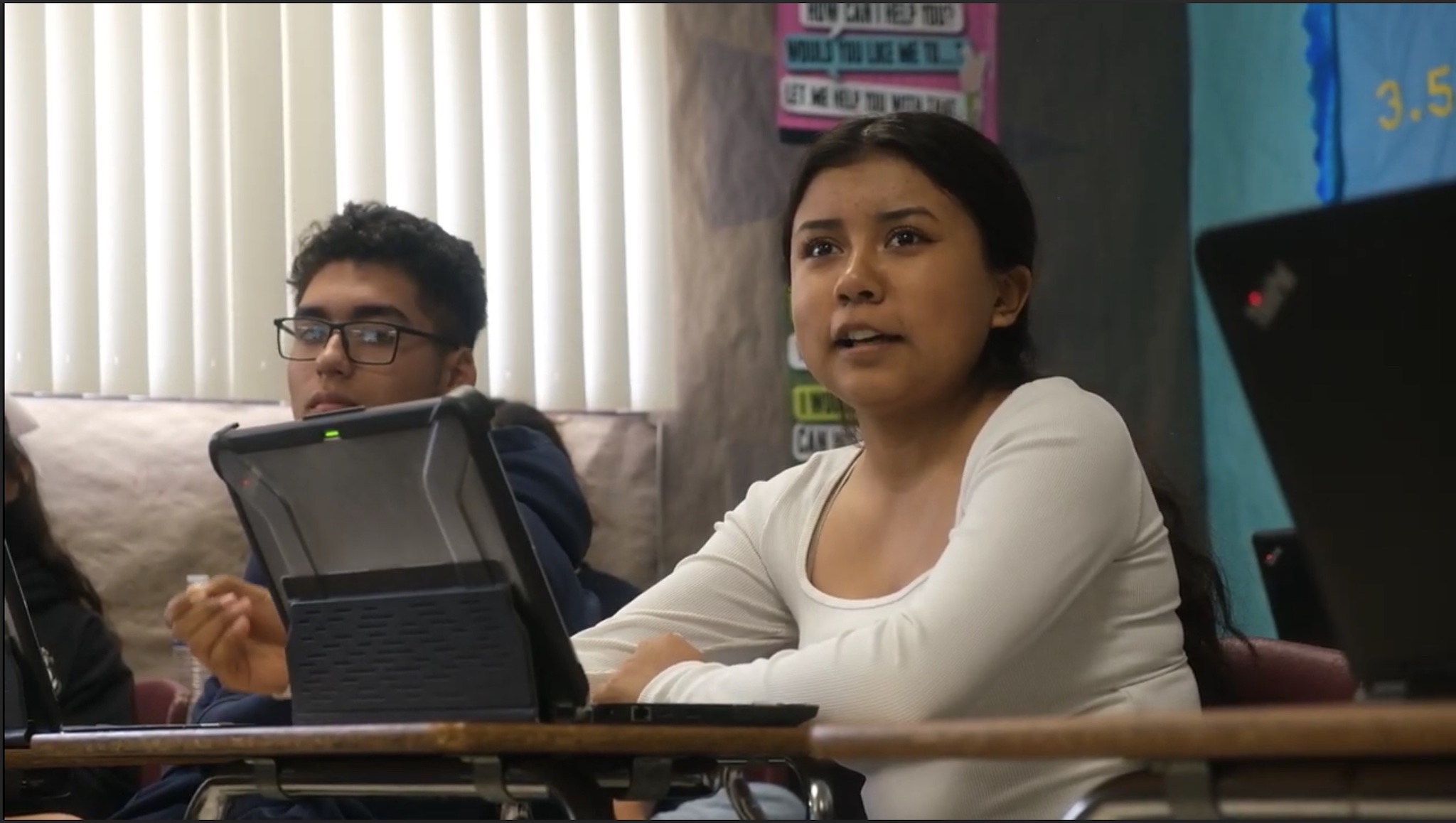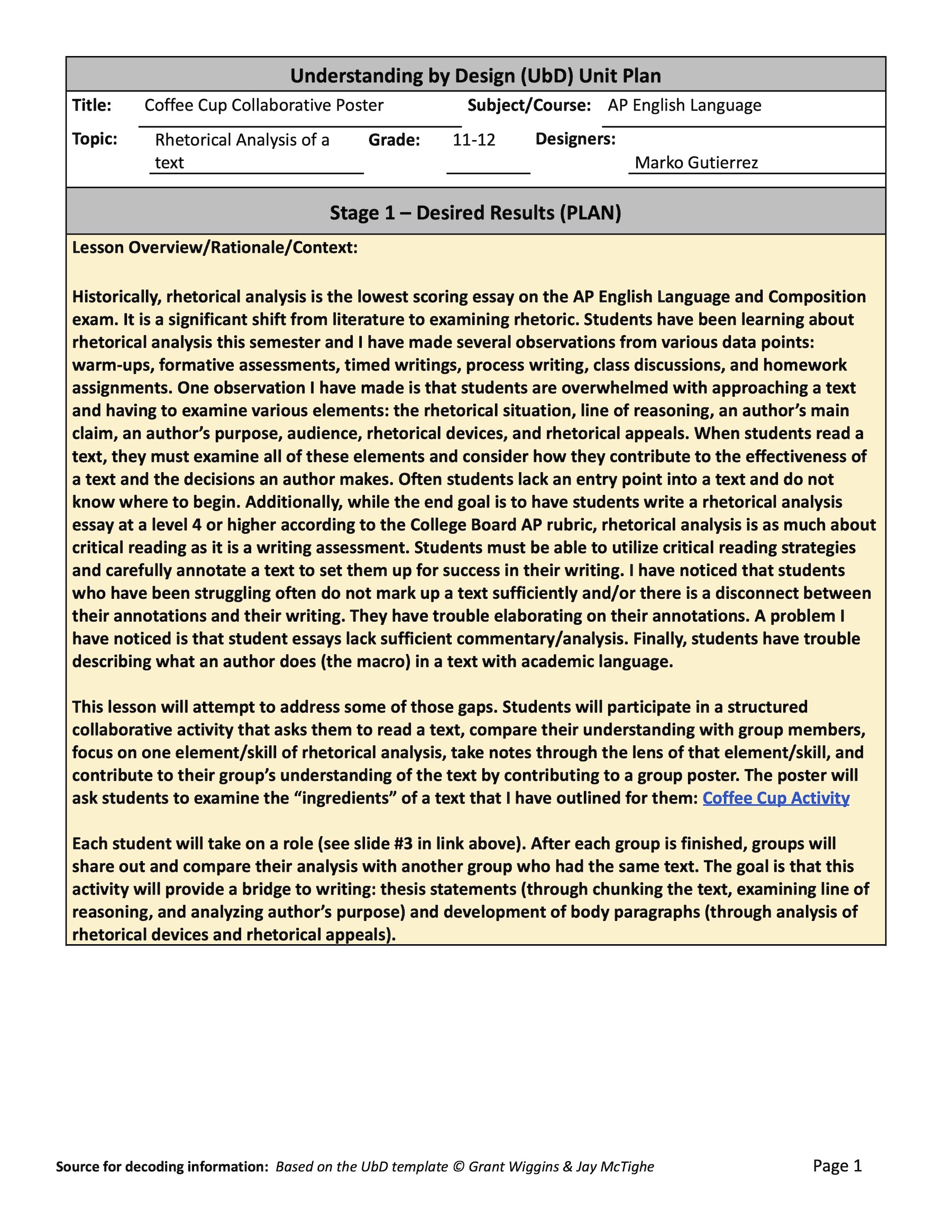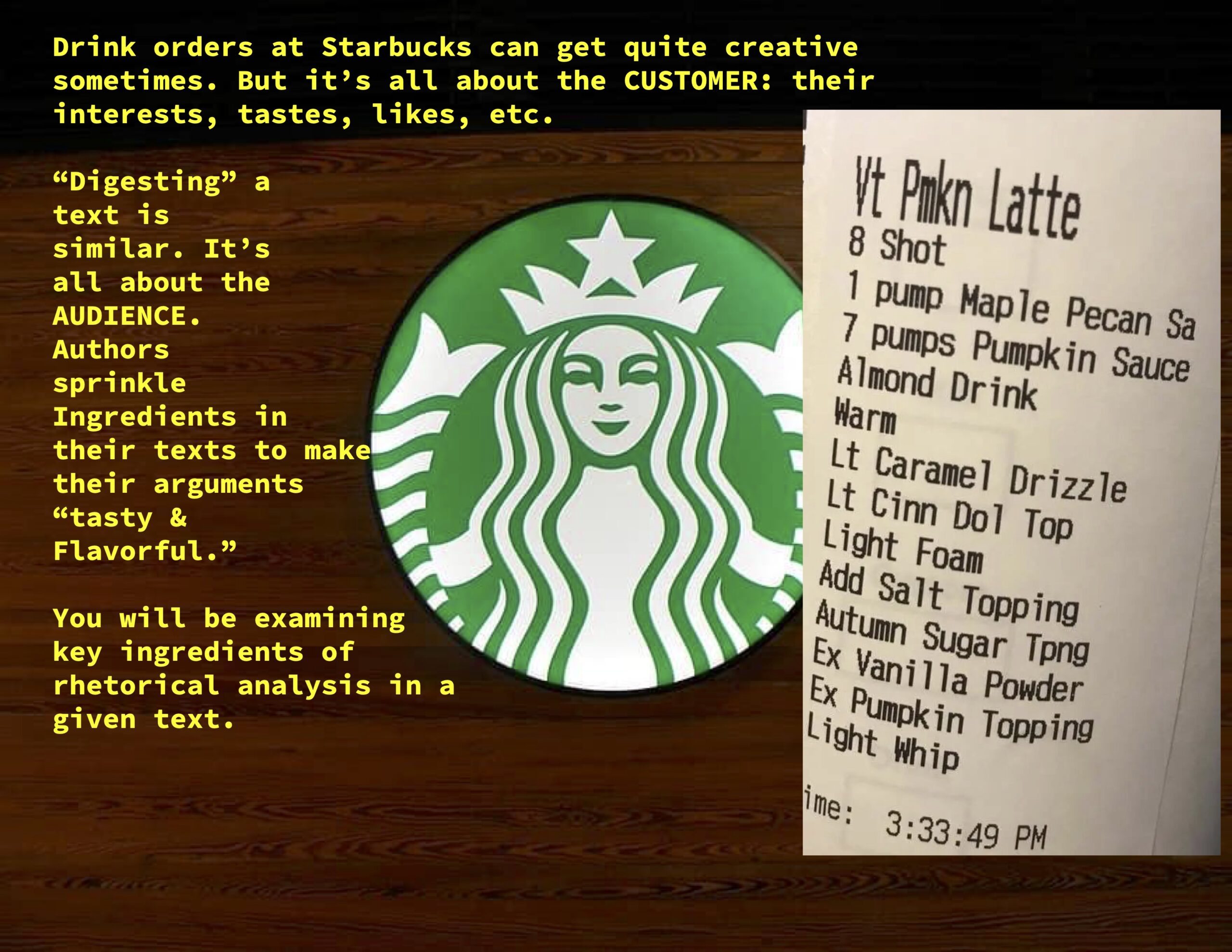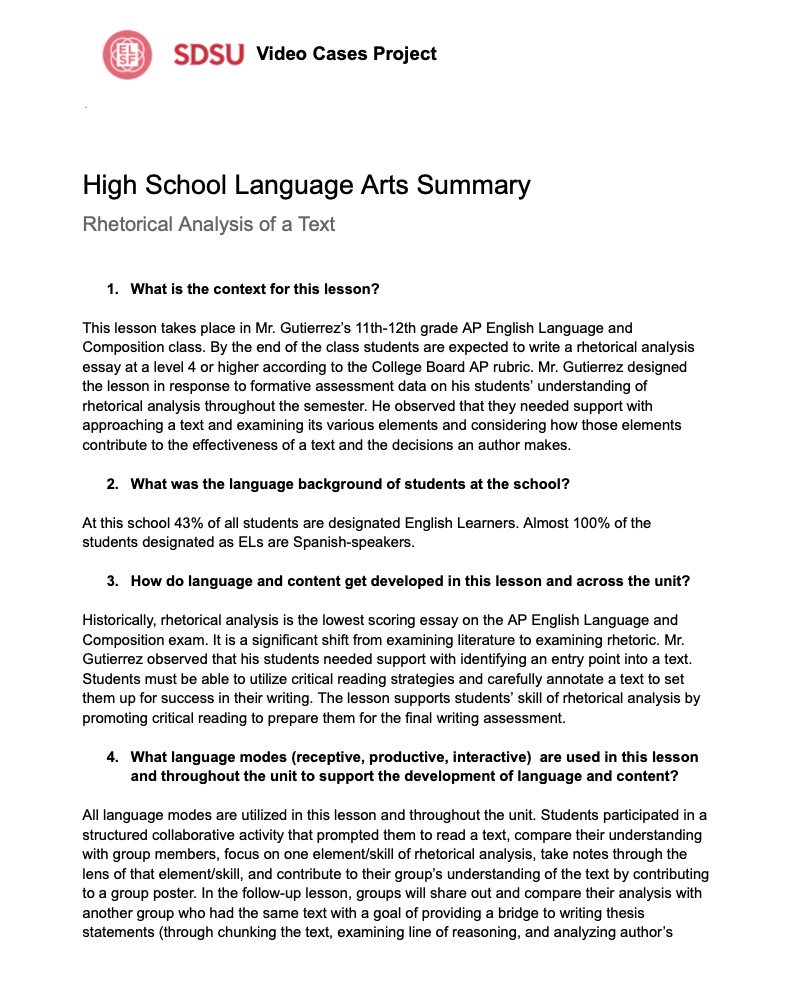Coffee Cup Activity: Rhetorical Analysis of a Text
What is the context for this lesson?
This lesson takes place in Mr. Gutierrez’s 11th-12th grade AP English Language and Composition class. By the end of the class students are expected to write a rhetorical analysis essay at a level 4 or higher according to the College Board AP rubric. Mr. Gutierrez designed the lesson in response to formative assessment data on his students’ understanding of rhetorical analysis throughout the semester. He observed that they needed support with approaching a text and examining its various elements and considering how those elements contribute to the effectiveness of a text and the decisions an author makes.
How are scaffolds embedded throughout the lesson and unit to support learning?
Students were given a Student Survival Guide for the Advanced Placement program which they used to participate in literary analysis. The Guide included information on Tone words, Academic verbs, Sentence frames and Sentence templates.
What makes this lesson culturally and linguistically responsive?
Mr. Gutierrez opened this lesson on identity by asking “What are some stereotypes of your culture?” “How can identity be both an obstacle and a superpower?” He also specifically chose four texts that he thought would get students’ attention and would reflect the values of the students in the classroom. These included “My Identify is my Superpower, Not an Obstacle” by America Ferrera, “The Danger of a Single Story” by Chimamanda Ngozi Adichie, “We call BS” by Emma Gonzalez and “A Latina Judge’s Voice” by Sonia Sotomayor.
Lesson Materials



